There are many species of plecos that all belong to the Loricariidae family of fishes. These suckermouth catfish are bottom-dwellers that are popular among aquarists for their habit of grazing on some of the algae on the viewing panes of your home tank.
Unfortunately, many types of plecos can grow extremely large, in some cases, up to 24” long, which is too big for most home tanks. So, what are the types of plecos that stay small?
Keep reading to discover the perfect small pleco for your aquarium!
13 Small Pleco Fish Breeds Under 4.3″ In Adult Size
Here are 13 small pleco species that grow to measure under 4.3” as adults, making any of these fish the ideal choice for most home fish tanks.
1. Bristlenose Pleco (Ancistrus Cirrhosus)
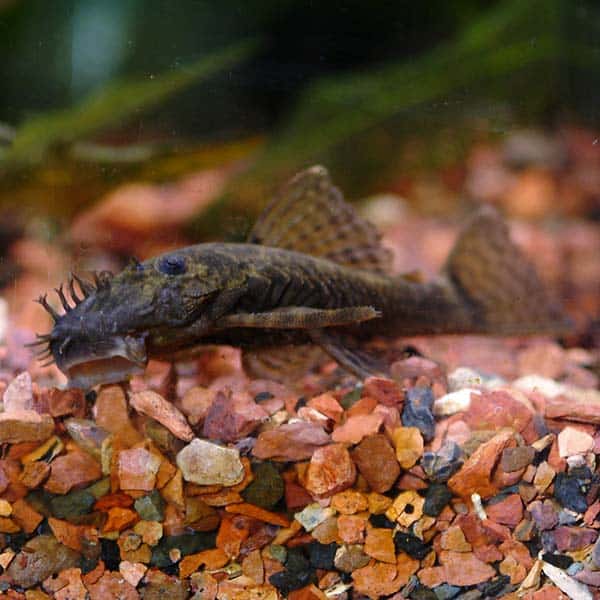
Size: 5 inches
Minimum tank size: 30 gallons
Suggested water temperature: 75° to 82°F
Key traits: Peaceful and easy to care for
Recommended for: Beginners
The Bristlenose pleco is also known as the Bushy Nose pleco, so named for the strange bunch of fleshy bristles that protrude from the fish’s snout.
These armored catfish come from the Amazon River basin in South America, where they live in a variety of different types of habitats. Bristlenose plecos are perfect for a beginner’s community tank, being easy to care for and hardy.
2. Gold Spot Dwarf Pleco (Parotocinclus Spilosoma)
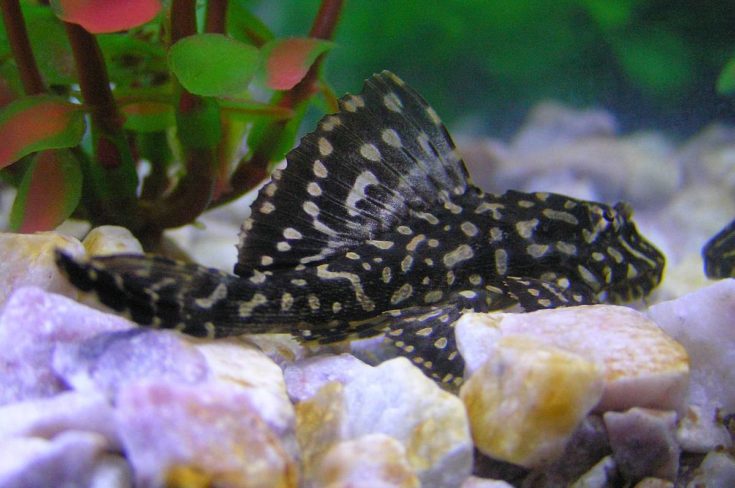
Size: 2 inches
Minimum tank size: 10 gallons
Suggested water temperature: 71° to 82°F
Key traits: Very peaceful, eats biofilm and algae, sometimes buries itself in the substrate
Recommended for: Beginners
These pretty little plecos are schooling fish that prefer to live in a group of at least three or more. Gold Spot Dwarf plecos are quite timid, and they need a heavily vegetated tank with lots of driftwood and rockwork where the fish can hide. These fish can burrow when they’re alarmed, so I recommend that you use sand or very fine gravel as your substrate.
As juveniles, these plecos eat biofilm and algae. However, adults need a diet of algae wafers and veggies.
3. Dwarf Snowball Pleco (Hypancistrus sp. L471)
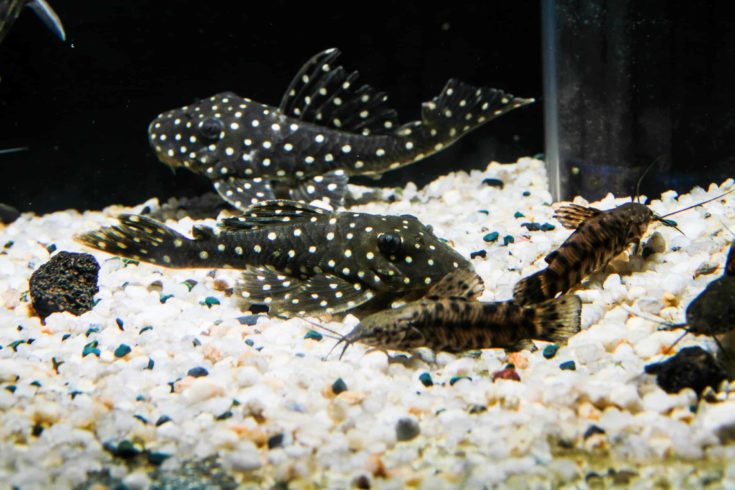
Size: 2.4 inches
Minimum tank size: 10 gallons
Suggested water temperature: 77° to 84°F
Key traits: Peaceful, carnivorous scavengers, primarily nocturnal
Recommended for: Some experience in fishkeeping is preferable
The Dwarf Snowball pleco is unusual in that it prefers to live in warmer waters than many other pleco species. Also, although this fish is omnivorous, it is primarily a meat-eater.
These plecos do well in small, heavily planted tanks with a moderate flow. Although the Dwarf Snowball pleco is a peaceful fish that does well in a community tank, these critters will eat small shrimp and shrimplets, so bear that in mind when stocking your tank.
4. Angelicus Pleco (Hypancistrus sp. L136)
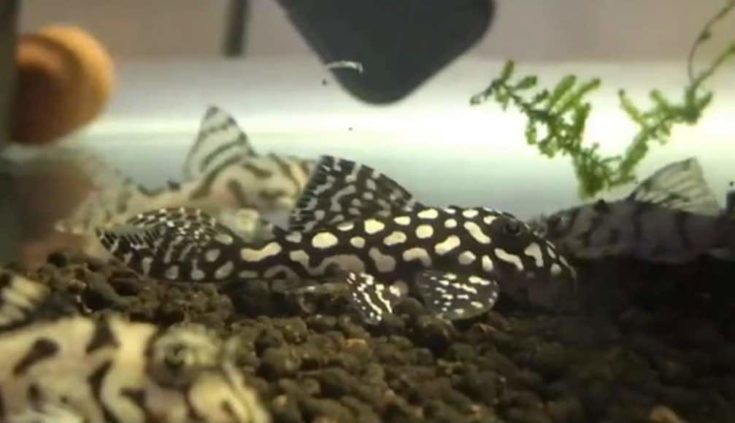
Size: 3.3 inches
Minimum tank size: 30 gallons
Suggested water temperature: 77° to 84°F
Key traits: Peaceful, community fish
Recommended for: Some experience in fishkeeping is preferable
The Angelicus pleco is a rare fish that has only recently been discovered and brought into the trade.
These plecos are generally peaceful, although they can be territorial with other plecos of the same and different species. The Angelicus pleco has generally been wild-caught, although these fish are now successfully raised in commercial breeding operations, so they are becoming more readily available to hobbyists.
5. Rubber Lipped Pleco (Chaetostoma Formosae)
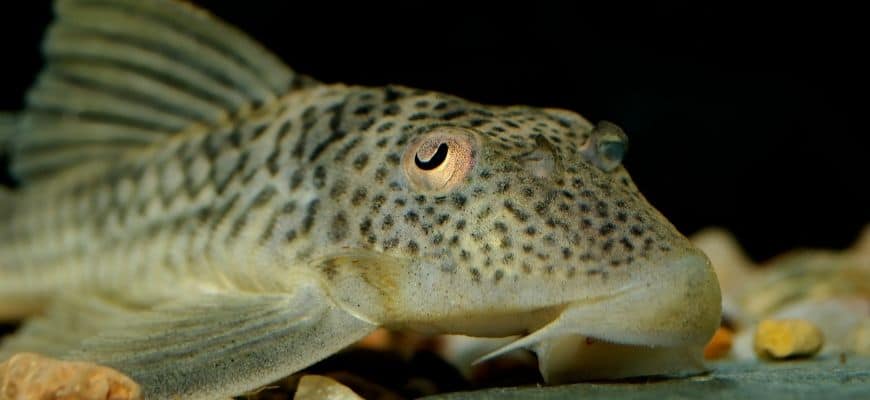
Size: 4.2 inches
Minimum tank size: 20 gallons
Suggested water temperature: 71° to 78°F
Key traits: Extremely peaceful, efficient algae eater, even eating Black Beard algae
Recommended for: Some experience in fishkeeping is preferable
Rubber Lipped plecos are highly active foragers that can be seen hanging on the glass and other tank surfaces grazing on algae and biofilm. These fish are one of the only pleco species to eat hair algae and Black Beard algae, making them a valuable addition to the community tank.
Although generally peaceful, these plecos can become aggressive in territorial disputes with conspecifics and similar-looking catfish.
6. Pitbull Pleco (Parotocinclus Jumbo)
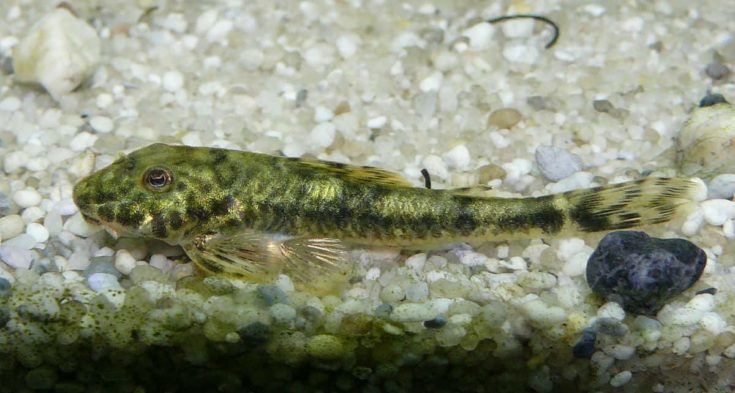
Size: 2.4 inches
Minimum tank size: 30 gallons
Suggested water temperature: 68° to 79°F
Key traits: Peaceful, active, schooling fish
Recommended for: Experienced aquarists. Can be fragile during acclimatization and wants stable water conditions
Pitbull plecos are active little fish once acclimatized, preferring to hang out mostly on the bottom of the tank. As these fish enjoy burrowing, they need a soft, sandy substrate.
These plecos are primarily vegetarian, although they do eat occasional animal proteins. Although the Pitbull pleco does eat small amounts of surface algae, they can’t be relied upon to keep your aquarium completely clear of algae.
7. Queen Arabesque Pleco (Hypancistrus sp. L260)
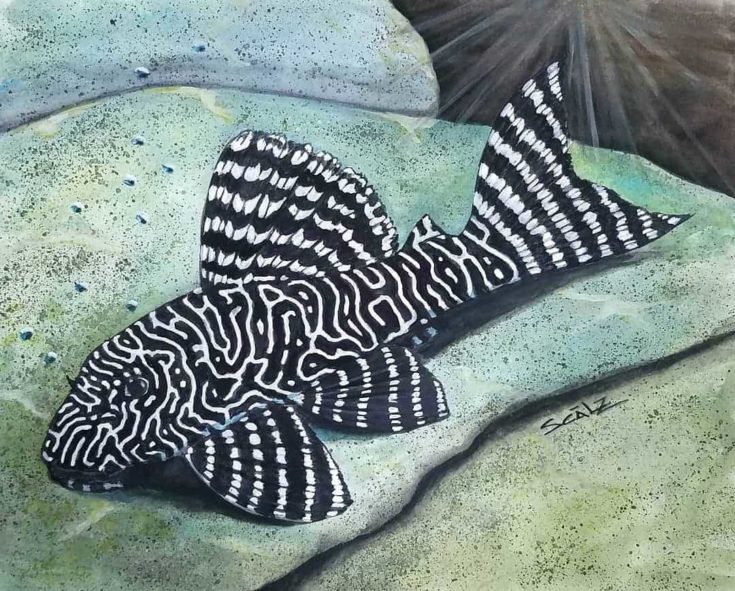
Size: 3.5 inches
Minimum tank size: 30 gallons
Suggested water temperature: 68° to 79°F
Key traits: Peaceful but aloof, doesn’t enjoy being in a tank with aggressive fish or fast swimmers, carnivorous, doesn’t eat algae
Recommended for: Beginners
The Queen Arabesque pleco is suitable for a community tank, although it doesn’t enjoy the company of fast swimmers or aggressive species, preferring to keep to itself. Provide these fish with plenty of driftwood and at least one cave.
This is an exclusively carnivorous pleco that feeds on small invertebrates, so you can’t keep them in a tank with shrimp. Also, don’t rely on this species of pleco to keep your tank free from algae since the Queen Arabesque pleco doesn’t eat any green stuff or vegetable matter.
8. Leopard Frog Pleco (Peckoltia Compta)
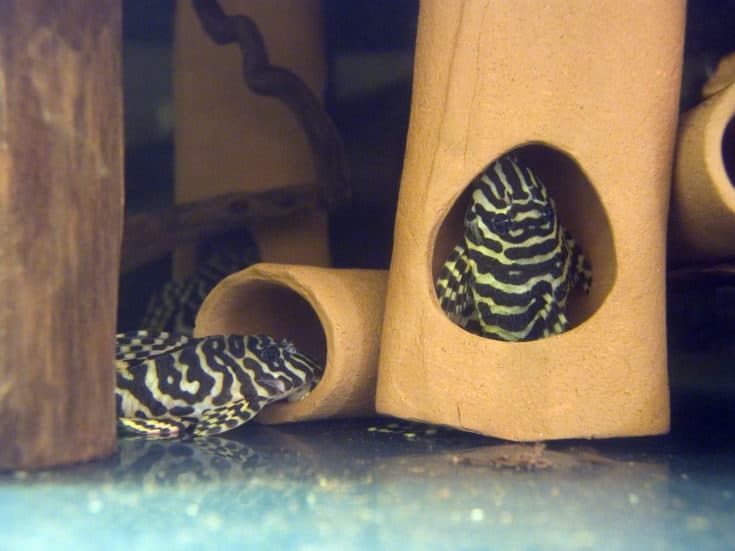
Size: 4.3 inches
Minimum tank size: 10 gallons
Suggested water temperature: 75° to 82°F
Key traits: Peaceful, very expensive to buy, doesn’t eat algae
Recommended for: Experienced hobbyists
The Leopard Frog pleco is very territorial with comost expensive fish in the hobbynspecifics and with some species of shark-like aquarium fish.
These fish prefer soft water and need a warm, tropical tank to reduce the risk of attack by parasites and diseases, such as Ich. These are very unusual fish that often command a price of several hundred dollars. For that reason, I don’t recommend the Leopard Frog pleco as the best pleco for a beginner.
9. Clown Pleco (Panaqolus sp. L206)
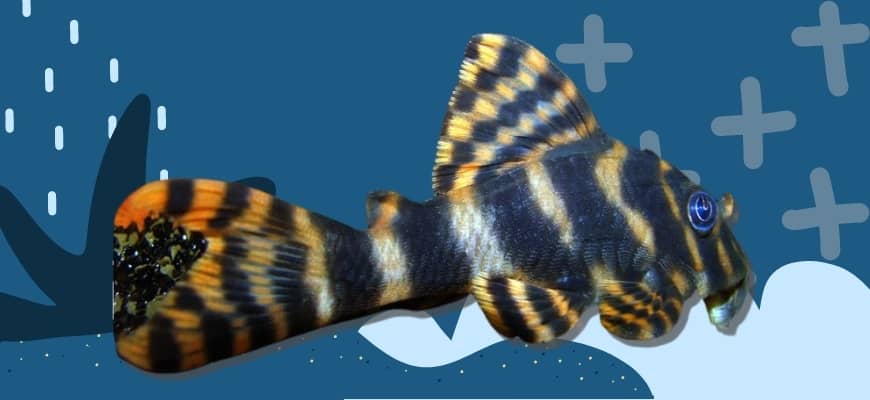
Size: 3.1 inches
Minimum tank size: 10 gallons
Suggested water temperature: 77° to 85°F
Key traits: Peaceful, wood-eating species, doesn’t clean up algae, not plant-safe
Recommended for: Okay for beginners, but you must do plenty of research on how to care for this species before purchasing one
The Clown pleco is unusual in that it is a wood-eater that doesn’t need any form of meat in its diet. To keep the fish happy and well-nourished you need to include at least two kinds of driftwood in your tank if you want to keep the species healthy.
Thanks to its diet, the Clown pleco does produce a lot of waste, so you do need an efficient mechanical filtration system to keep the water clean.
10. Chocolate Zebra Pleco (Hypancistrus sp. L270)
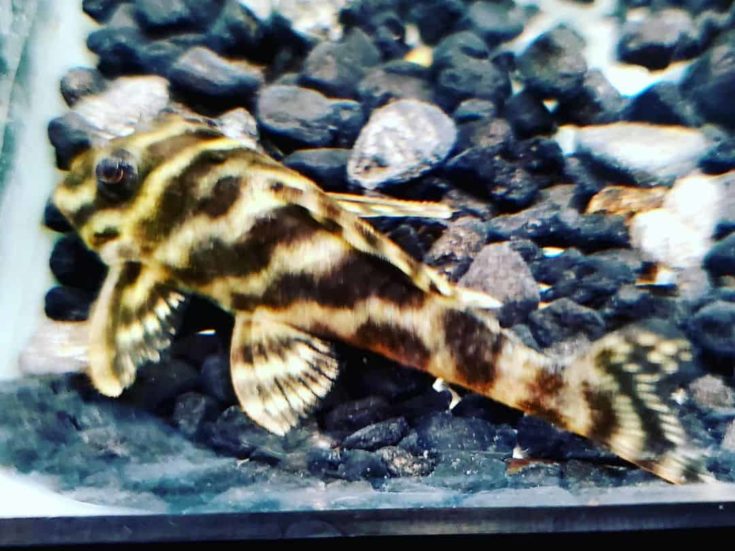
Size: 3.9 inches
Minimum tank size: 20 gallons
Suggested water temperature: 80.6° to 86°F
Key traits: Needs very warm well-oxygenated water, not competitive when feeding so shouldn’t be housed with aggressive feeders
Recommended for: Experienced fishkeepers
The Chocolate Zebra pleco is one of the more expensive fish breeds, and for that reason, I don’t recommend the species for a complete beginner.
These fish like plenty of water movement and an environment that closely mimics their natural habitat. These are beautiful little plecos that can make an exciting addition to any fish tank.
11. Zebra Pleco (Hypancistrus sp. L270)
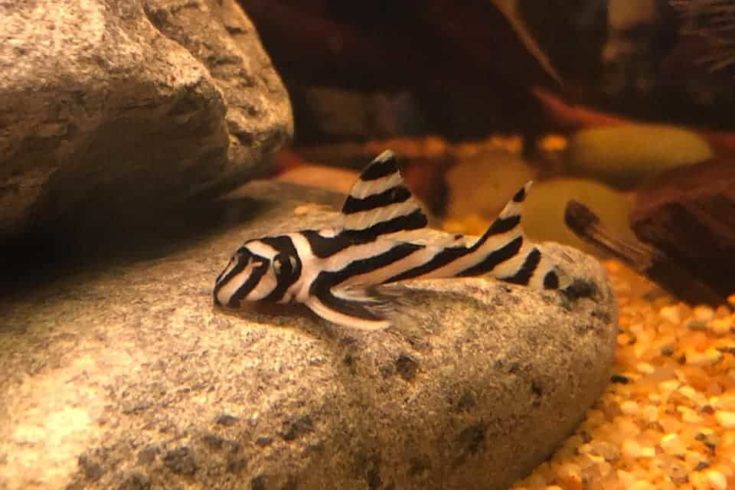
Size: 3.5 inches
Minimum tank size: 20 gallons
Suggested water temperature: 79° to 86°F
Key traits: Shy, passive fish that are nocturnal, spending much time hiding out in caves
Recommended for: Experienced hobbyists
Zebra plecos are one of the most expensive fish in the hobby.
These beautiful fish prefer to live in fish tanks that simulate their natural habitat. So, a happy Zebra pleco needs an oxygen-rich environment with a powerful flow, plenty of hiding places, caves, driftwood, and a sandy substrate.
These pricey plecos are nocturnal, only coming out at night to feed.
12. Brown Dot Pleco (Peckoltia Oligospila)
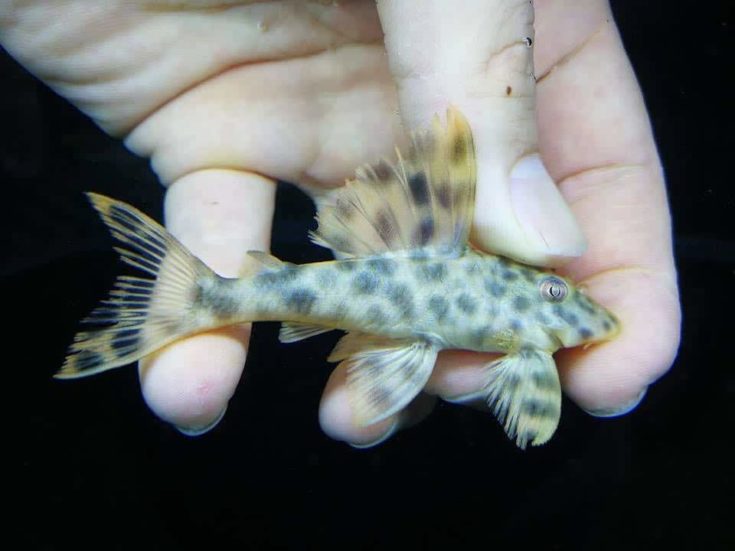
Size: 3.9 inches
Minimum tank size: 25 gallons
Suggested water temperature: 75° to 78°F
Key traits: Peaceful species of pleco, although can be territorial
Recommended for: Experienced aquarists
The Brown Dot pleco enjoys a spacious tank with excellent filtration. Excellent decoration is a must, including lush planting, rockwork and wood that provides the fish with plenty of hiding places.
These plecos are omnivorous, requiring a diet that contains meaty protein, brine shrimp, bloodworms, and catfish wafers.
13. Soromon Pleco (Soromonichthys Stearleyi)

Size: 1.2 inches
Minimum tank size: 10 gallons
Suggested water temperature: 71.5° to 82.5°F
Key traits: Peaceful, active
Recommended for: Experienced fishkeepers
The Soromon pleco is the smallest of the pleco species and is a relative newcomer, having only been discovered in 2011.
These are also one of the rarest plecos that are very seldom encountered in the hobby, so virtually nothing is known about them.
In Conclusion
I hope you loved our list of small pleco species that offer a great alternative to the big guys.
Although some of the plecos we’ve included in this list are rare or prohibitively expensive, especially for newbies, there are plenty of these cute little fish that are suitable for a beginner’s tank.
Tell us about your mini plecos in the comments section below, and please share our article if you loved it!